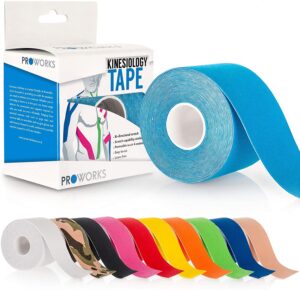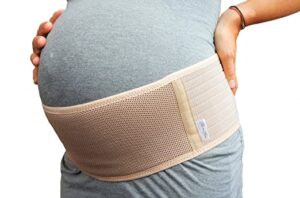Upper back pain is usually found in the area above the bra-strap and below the bottom of the neck, it can also affect the upper shoulder region (trapz). It is very common during and after pregnancy due to postural changes.
Symptoms:
-
Pain in the upper back region.
-
Pain around one or both shoulder blades.
-
Pain in one or both upper-shoulders (region, next to the neck).
-
Can also occasionally be associated with chest pain, rib pain or tightness in this region.
Causes:
-
Changes in posture due to pregnancy / shift in where weight is being carried.
-
Change in posture due to a lot of time spent feeding baby / change in lifestyle.
-
Weakness in low back and abdominals causing added pressure on the upper spine.
-
Chest pain can be caused by over use of the upper back and tightness due to postural changes.
Here is what the evidence says about the treatment options:
Yoga – Yoga has been studied for it’s many benefits. THIS study showed benefits for the upper back when doing just 10 mins of yoga a day for 1 month. It also showed that doing this helped improve the participants mood.
There are lots of Online Yoga programmes available, have a look at our Top 5 here (and why we love them)! You can also read our blog on how yoga can help in other ways.

Pilates – This study found that Pilates‐based thoracic exercise could increase thoracic extension and side‐bending mobility, and thus, contribute to the improvement of disability and function in patients with upper back and neck pain. This study looked at the overall effects of Pilates on the pregnancy and the birth and concluded that a physical activity programme of 8 weeks, based on the Pilates method, improves functional parameters in pregnant women and benefits delivery.
Have a look at our Top 5 online Pilates programmes here.
Kinesio Tape – evidence suggests that the use of Kinesio-tape can be really helpful with upper back pain, especially if it is affecting the upper trapezius region (upper shoulders, next to the neck). The study also shows that if you combine kinesio-taping with strength work like our Pilates programmes then you get an even greater decrease in pain and improved range of movement.
Here is a good video showing you an application technique for upper back pain. Thisis the tape that we always recommend as it is the one that we use in our clinics (and can confirm that the adhesive is very good) and it also comes with great reviews.
Trigger point release – evidence shows that dry needling and trigger point release is effective in treating upper back and neck pains. THIS study shows that both dry needling and manual trigger point relief have positive results when treating upper back and neck pain and that neither technique is superior to the other. Dry needling would involve booking in with your local Physiotherapist (who is a registered acupuncturist)
Carrying out your own trigger point release can be easily done using a specific ball like this one (which has over 3000 great reviews). Trigger point release helps to relieve the tension in the muscles around the affected areas, it can give an almost instant result. Check out this video for a great ‘how to’ guide.
Heat – Evidence suggests that heat can be beneficial (particularly in the short term) for pain relief in the back and when it comes to pelvic or period-type pains. Heat helps to increase blood flow to the desired area, resulting in more relaxed muscles and a reduction in static fluids. You can use a hot-water bottle as a good heat source or get yourself a wheat-bag that you heat in the microwave (the heat from these usually last about 15 minutes). There is also the option of the heat patches like these which last about 12hrs and are self adhesive.
Pregnancy support belt – Support belts during pregnancy can help take some of the pressure off the back, pelvis and growing bump. It is theorised that this can also help to support the abdominal wall, consequently reducing pressure on the rest of the spine.
Support belts should not be seen as a replacement for exercises and strength work but as a welcomed addition. There are very few studies backing-up their use when it comes to upper back pain this isn’t to say that it doesn’t work, but more research is certainly needed into this area.
Here are our top 5 choices of maternity support belts (here) to help guide you based on what they can help with and what we like about them.
What symptoms to watch for:
If you have any of the following symptoms then please inform your healthcare provider right away or go to A&E:
-
Recent trauma or fall (i.e. car accident).
-
A fever, chills, unexplained weight loss that accompanies the back pain.
-
Recent bacterial infection diagnosed.
-
Pain that is:
-
Constant, severe and progressive.
-
Non-mechanical – without relief from bed rest or postural modification.
-
Accompanied by severe morning stiffness.
-
-
Severe or progressive pins and needles or numbness or weakness in the legs.





